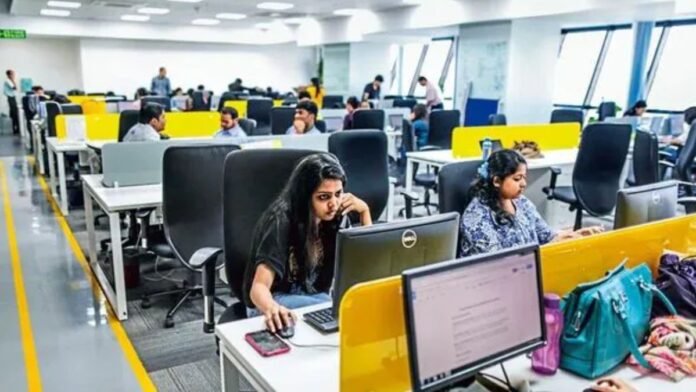The government plans to inspire the non-public region to increase virtual public infrastructure (DPI) apps in the centre regions of India’s economic.
These areas encompass credit, agriculture, commerce, education, health, law and justice, logistics, micro-, small- and medium-sized firms (MSMEs), offerings transport, and urban governance, finance minister Nirmala Sitharaman stated at some point of her finances speech on Tuesday.
The circulate is anticipated to help hundreds of tech startups, Indian IT services providers, and even the neighborhood operations of huge tech organizations.
During the period in between union finances supplied in February, the government expectedly did no longer make any main proposals for the era zone. But it did imply it desired to strengthen the country’s DPI with the aid of christening it a “component of production (the others being land, labour, capital and entrepreneurship) inside the 21st century”.
In India, DPI (previously called the ‘India Stack’) refers to systems which include virtual identification, fee infrastructure and facts alternate answers along with Aadhar, the Unified Payment Interface (UPI), Account Aggregator, Health Stack, and the Open Network for Digital Commerce (ONDC), constructed at the Data Empowerment Protection Architecture (DEPA).
Having “successfully used generation for improving productiveness and bridging inequality in our economy during the past 10 years”, Sitharaman said on Tuesday, the government plans to “step up adoption of generation toward digitalization of india’s economics”.
Take, for example, the easing of credit score evaluation for micro, small and medium firms (MSMEs), and the government’s technology guide package to assist them grow and compete globally. This is predicted to reinforce the fortunes of tech startups (at the side of the scrapping of the Angel Tax to entice greater buyers) and businesses that offer software program-as-a-provider (SaaS) gear.
So will the accelerated use of the era in quite a few different fields. These include digitizing land and agricultural records, enhancing towns, improving data collection, and statistics governance, integrating sectoral databases such as the ones hooked up beneath the Digital India undertaking, and putting in an Integrated Technology Platform to improve the performance of the Insolvency and Bankruptcy Code (IBC).
In the interim finances, the government had introduced the usage of deep tech technologies in sectors like defence in a bid to make India self-reliant; hold reskilling the country’s youngsters; and encourage the personal quarter to foster studies and innovation with hobby-unfastened budget.
This time around, the focus is on agriculture, space, the sun, and small nuclear reactors.
“Buoyed via the fulfilment of the pilot task”, the government plans to put in force DPI in agriculture with the assistance of national governments “for insurance of farmers and their lands in three years”, said Sitharaman.
It additionally plans to adopt a digital crop survey for Kharif plants and the use of DPI in four hundred districts. Further, the details of 60 million farmers and their land will be added to the farmer and land registries, and Jan Samarth-based total
The government additionally introduced that it’s going to introduce “land-related reforms and movements” in rural and urban regions too, together with the mission of a Unique Land Parcel Identification Number (ULPIN) or Bhu-Aadhaar for all lands, and digitization of cadastral maps.
Further, land facts in city regions can be digitized with geographical facts systems (GIS) mapping. The government may even put into effect an IT-primarily based machine for belongings report administration, updating, and tax administration in a bid to enhance the monetary function of urban neighbourhoods our bodies.
These actions will mainly help startups and organizations that offer mapping answers, agritech answers, drone operations and schooling throughout numerous sectors like agriculture and infrastructure, and other SaaS and digital tools.
With innovation, studies and improvement (R&D), being made one of the 9 priorities of the authorities, the Rs. 1 trillion innovation fund, too, is expected to sell innovation in space tech, deep tech and lots of different rising generation-oriented sectors.
Further, the budget declaration of investment within the country’s human capital through ₹2 trillion, too, is of “massive importance”, in line with Siddhartha Tipnis, Partner and Technology Sector Leader at Deloitte India.
He explains that the technology area is “especially predicted to gain via the infusion of fresh talent thru programmes including skilling loans, educational loans, internships and participation of women in personnel”.
While there was no mention of artificial intelligence (AI) or quantum generation, the meantime price range did provide sufficient scope for the use of AI equipment and advanced information analytics amid authorities’ plans to extend and improve the US’s electric car ecosystem, and the agriculture and healthcare sectors.
The authorities have already allocated ₹10,354 crore for the AI Mission inside the interim budget, and ₹477 crore for the National Quantum Mission (NQM).



